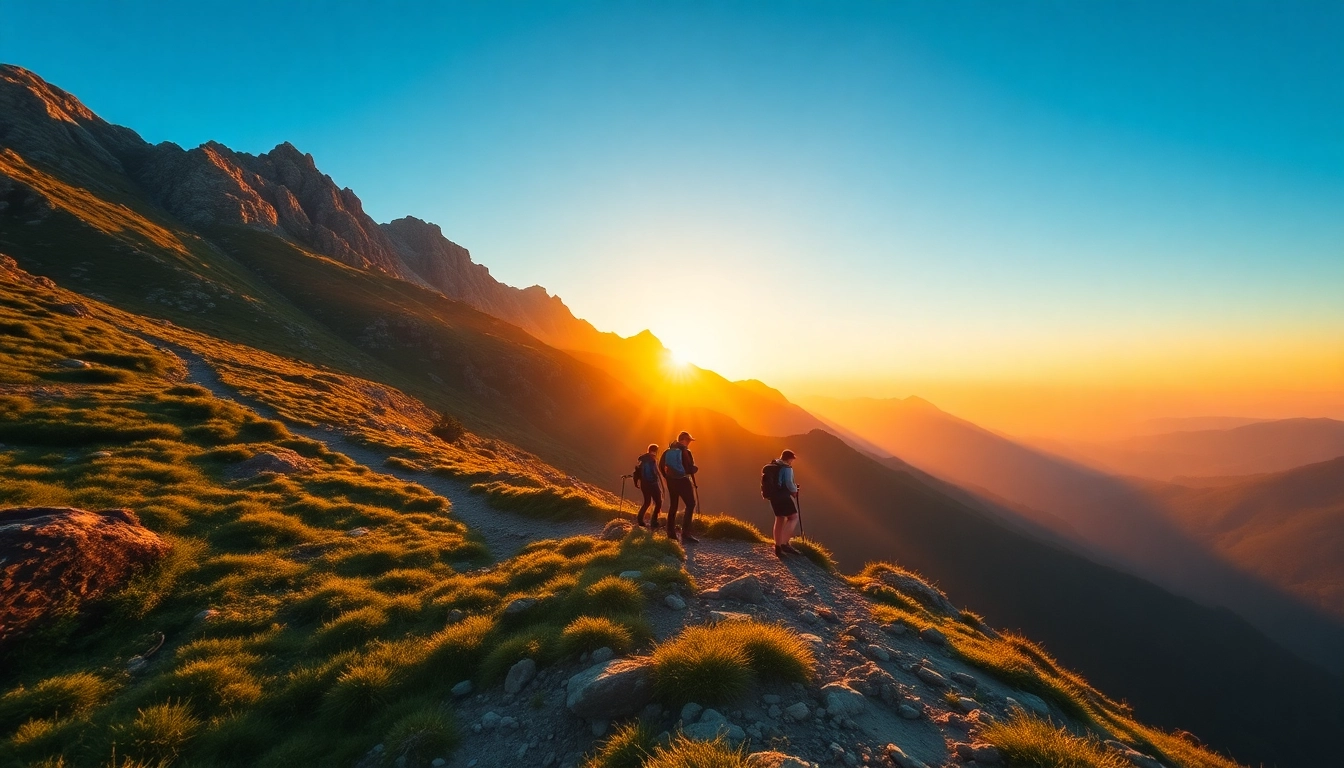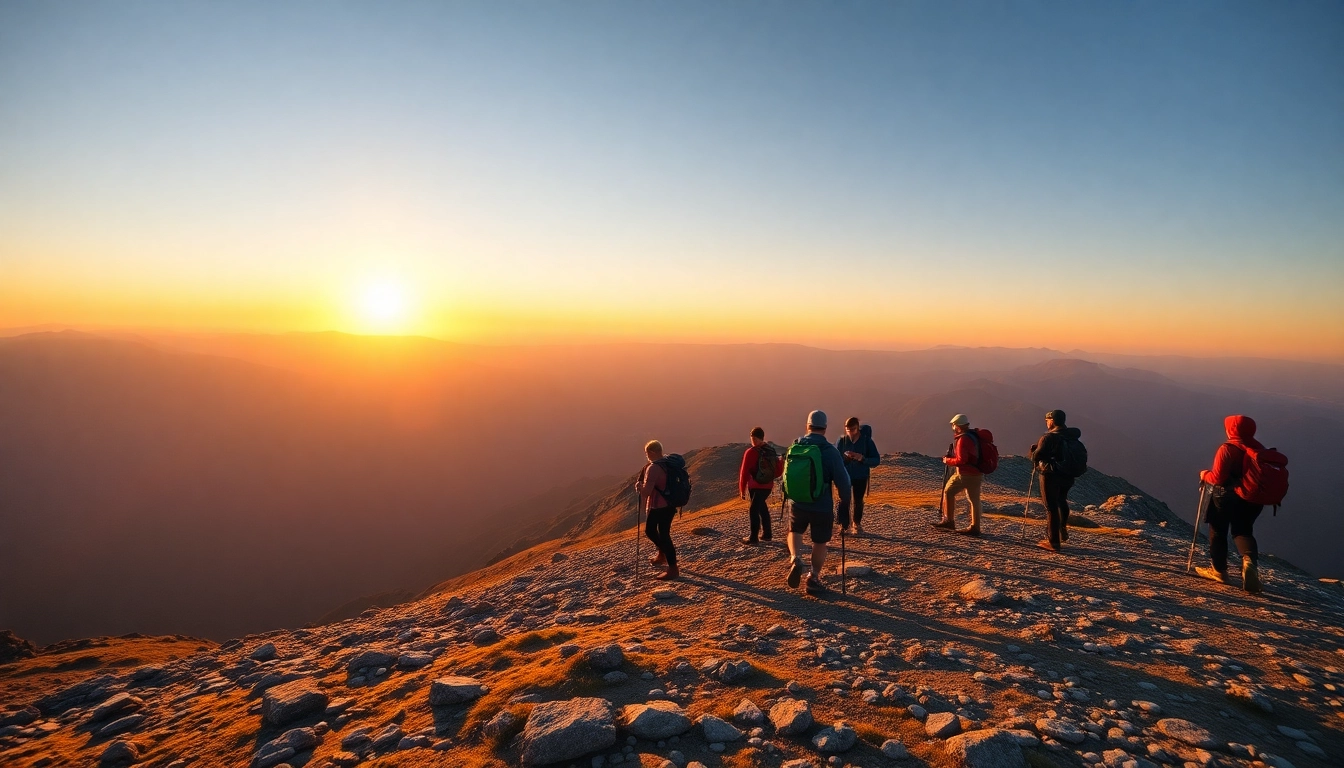Understanding Trekking: Definitions and Differences from Hiking
The Meaning of Trekking and Its Unique Characteristics
Trekking is an immersive outdoor activity characterized by long, vigorous journeys through natural landscapes, often spanning multiple days. Unlike simple hiking, which may involve day trips on established trails, trekking ventures into remote, rugged terrains that challenge both physical endurance and mental resilience. The activity emphasizes exploration, adventure, and a deep connection with untouched environments, making it an enriching experience for outdoor enthusiasts.
For those looking to deepen their connection with nature and test their limits, trekking offers an unparalleled experience. It involves walking or hiking through terrains that can include mountains, forests, valleys, and even deserts, often requiring endurance over extended periods. The terrain can be unpredictable, demanding adaptability and preparedness from trekkers.
The core characteristics that define trekking include:
- Duration: Typically lasting several days or even weeks, depending on the route and level of challenge.
- Terrain: Off-trail, rugged, and often remote environments that demand specialized skills and equipment.
- Physical Demands: Requires sustained endurance, strength, and often, technical skills such as navigation and survival skills.
- Mental Resilience: Facilitates self-reliance, mental toughness, and the ability to adapt to changing conditions.
- Purpose: Exploration, adventure, cultural immersion, and personal growth.
Different from casual day hiking, trekking often involves planning for accommodations along the way, such as tents, shelters, or staying in small local guesthouses. It is a journey that challenges both body and mind, offering a profound sense of accomplishment upon completion and a deeper appreciation of natural and cultural landscapes.
Distinguishing Trekking from Hiking: Key Features and Challenges
Although often used interchangeably in casual conversation, trekking and hiking are distinct activities with notable differences in scope, difficulty, and purpose. Understanding these differences is essential for planning an appropriate adventure tailored to your fitness level and objectives.
Definitions and Scope
According to the Cambridge Dictionary, hiking involves walking long distances for pleasure, typically on well-marked trails for a day or less. Trekking, on the other hand, refers to long-distance journeys that may span several days, often in undeveloped or remote environments. As highlighted by experts, trekking generally encompasses more strenuous activities and demands higher physical and mental resilience.
Key Features Comparison
| Feature | Hiking | Trekking |
|---|---|---|
| Duration | Typically a few hours to a day | Multiple days or weeks |
| Terrain | Well-maintained trails, less challenging | Rugged, often off-trail environments |
| Equipment & Preparation | Minimal, casual gear | Specialized gear, navigation tools, and planning |
| Physical Intensity | Moderate | High, demanding endurance and strength |
| Purpose | Recreation, fitness, sightseeing | Adventure, exploration, cultural immersion |
| Risk Factors | Low to moderate | High, need for cautious planning and safety measures |
Challenges in Trekking
The primary challenges faced during trekking include unpredictable weather, difficult terrains such as steep slopes or dense forests, altitude sickness in mountain regions, and logistical issues like procuring supplies or finding accommodations. Additional challenges involve navigation in remote areas, potential injuries, and environmental hazards.
Successfully overcoming these hurdles requires careful preparation, experience, and a well-thought-out itinerary. Many trekkers find that the physical and mental challenges ultimately lead to a sense of achievement and personal growth.
Why Trekking Offers a Distinct Adventure in Natural Landscapes
Trekking unlocks a unique way to experience Indonesia’s diverse and breathtaking landscapes, from lush rainforests and active volcanoes to remote mountain peaks and pristine beaches. It provides a deeper, more immersive exploration than typical sightseeing or day-hiking activities.
The activity’s essence lies in its capacity to connect adventurers with Mother Nature on a profound level. Trekking in Indonesia, especially on islands like Lombok, allows you to traverse dense jungles, ascend volcanic summits, and pass through traditional villages, gaining insights into local cultures and ecosystems.
Moreover, trekking promotes sustainable tourism by encouraging responsible interaction with natural environments. By staying on designated paths, respecting local customs, and minimizing ecological impact, trekkers contribute to the preservation of these fragile ecosystems.
The adventure is not just physical but also cultural and spiritual. It offers transformative experiences—overcoming personal limits, discovering hidden gems, and fostering a sense of achievement that stays with you long after your journey ends.
Planning Your Trekking Adventure in Indonesia
Selecting the Best Trekking Routes in Lombok and Beyond
Indonesia boasts an array of world-class trekking destinations, each offering unique landscapes and experiences. Lombok, with its iconic Mount Rinjani, is a premier location for trekking enthusiasts seeking challenging climbs and scenic vistas. Other notable routes include the Komodo Islands, the Bali Quad Mountains, and Sumatra’s Gunung Leuser National Park.
When choosing a route, consider factors such as your fitness level, available time, and specific interests—whether it’s mountain summits, jungle expeditions, or cultural visits. Rinjani Trekking, for instance, typically spans 2–4 days, ascending Indonesia’s second-highest volcano and offering habitats of rare flora and fauna.
For beginners or those with limited time, guided day hikes or short multi-day tours can introduce you to Indonesia’s natural beauty without the demanding logistics of longer treks.
Top Trekking Routes in Indonesia
- Mount Rinjani, Lombok: A challenging volcano trek with breathtaking crater lakes and panoramic views.
- Inca Trail to Mount Semeru, East Java: Experience volcanic and jungle terrains with rich cultural histories.
- Kelimutu Lakes, Flores: Explore volcanic crater lakes and vibrant colors resulting from mineral deposits.
- Sumatra Jungle Trek: Discover orangutans and endemic species in one of the world’s most biodiverse rainforests.
- Bali’s Mount Batur: An accessible sunrise hike with stunning views over the volcanic caldera.
Preparing Physically and Mentally for Multiday Trekking
Adequate preparation begins with a tailored fitness regime that includes cardiovascular endurance, strength training, and flexibility exercises. Working on stamina through long walks, stair climbing, and interval training can significantly enhance performance.
Mental resilience is equally critical. Visualization techniques, meditation, and thorough route planning help manage anxiety and build confidence. Familiarize yourself with the terrain, weather conditions, and emergency procedures to boost mental readiness.
Additionally, a checklist of essential skills—navigation, basic first aid, and shelter construction—can be invaluable. Enrolling in pre-trek courses or guided practice hikes will further enhance your preparedness.
Essential Gear and Safety Tips for Trekking Expeditions
The right gear can make or break your trekking experience. Key items include sturdy hiking boots, moisture-wicking clothing, a high-quality backpack, navigation tools (compass, GPS), and a comprehensive first aid kit. Depending on the environment, consider gear such as crampons, trekking poles, headlamps, and thermal layers.
Safety should always be a top priority. Ensure you inform someone about your itinerary, carry sufficient supplies, and stay updated on weather forecasts. Respect local regulations and wildlife, and always follow Leave No Trace principles to minimize your environmental impact.
Executing a Safe and Enjoyable Trekking Experience
Step-by-Step Guide to Trekking in Rugged Terrain
- Pre-entry Preparation: Check weather conditions, plan your route, and communicate your plans to trusted contacts.
- Assemble Equipment: Prepare gear suitable for the environment—boots, clothing, navigation tools, and safety supplies.
- Start Early: Begin your trek at dawn to maximize daylight and avoid afternoon weather changes.
- Follow Marked Paths: Stick to designated trails to protect ecosystems and facilitate safety.
- Monitor Your Condition: Regularly assess your physical and mental state, taking breaks as needed.
- Navigation & Communication: Use GPS and maps; carry a communication device for emergencies.
- Environmental Care: Dispose of waste responsibly, avoid disturbing wildlife, and respect local communities.
Best Practices for Environmental Responsibility and Leave No Trace
Preserving Indonesia’s pristine environments ensures future generations can enjoy the same natural wonders. Follow Leave No Trace principles:
- Plan ahead and prepare thoroughly.
- Travel and camp on durable surfaces.
- Dispose of waste properly—pack out what you pack in.
- Leave what you find—avoid removing rocks, plants, or cultural artifacts.
- Respect wildlife and avoid feeding animals.
- Be considerate of other visitors and local communities.
Handling Challenges and Unexpected Situations
Challenges such as injuries, sudden weather changes, or navigational errors are part of trekking. Always carry a basic first aid kit and learn simple emergency response techniques. If faced with injury, prioritize safety and seek help if necessary. In adverse weather, seek shelter and reassess the situation before proceeding. Maintaining a flexible attitude and having contingency plans enhance safety and enjoyment.
Benefits of Trekking for Health, Mind, and Connection with Nature
Physical Fitness and Endurance Gains
Regular trekking can dramatically improve cardiovascular health, muscle strength, and flexibility. Carrying a backpack, navigating uneven terrain, and climbing increase stamina and help burn calories effectively. The weight-bearing activity strengthens bones and muscles, reducing the risk of osteoporosis.
Scientific studies indicate that such physical exertion also improves lung capacity and overall metabolic health, making trekking a natural form of comprehensive exercise.
Mental Wellness and Stress Reduction
Immersing oneself in nature has been proven to lower cortisol levels, reduce anxiety, and improve mood. Trekking offers a break from daily stressors, encourages mindfulness, and helps foster a sense of achievement. The serenity of remote landscapes facilitates reflection, mental clarity, and emotional resilience.
Experiences such as witnessing a sunrise over mountain peaks or encountering rare wildlife catalyze feelings of awe and gratitude, contributing to mental well-being.
Building Cultural Awareness and Respect for Local Communities
Trekking routes often pass through indigenous villages and cultural sites. Engaging respectfully with local communities fosters mutual understanding and appreciation. Learning local customs, supporting eco-tourism initiatives, and contributing economically through responsible travel promote sustainable development.
Interactions during treks can be eye-opening, broadening perspectives and enhancing cultural sensitivity, thus enriching the overall experience.
Maximizing Your Trekking Experience: Tips and Resources
Using Trekking Poles and Other Helpful Equipment
Trekking poles provide stability on uneven terrain, reduce strain on knees, and improve balance. Choosing lightweight, adjustable models with ergonomic grips enhances usability. Besides poles, other essential equipment includes moisture-wicking clothing, portable water filters, and multi-purpose tools.
Proper gear selection improves efficiency, safety, and comfort throughout your journey.
Finding Official Guides and Organized Tours in Indonesia
Hiring experienced local guides ensures safety, enriches cultural understanding, and supports sustainable tourism. Reputable tour operators provide logistical support, equipment, and expert advice tailored to your skill level. Indonesia offers numerous organized treks with professional guides, especially on popular routes like Mount Rinjani or the jungle trails of Sumatra.
When choosing a guide or tour, verify credentials, reviews, and their adherence to environmental standards.
Additional Resources and Visual Guides for Aspiring Trekkers
To prepare thoroughly, utilize maps, online forums, and visual guides such as videos and photographs from previous trekkers. Many organizations and blogs publish detailed itineraries, packing checklists, and safety tips. Engaging with social media communities and online courses can also enhance your skills and confidence.
Remember, continuous learning and preparation are key to a successful trekking adventure.

